News and Events
At HeartShare, we believe in keeping you aware of news and events throughout the agency. Be sure to visit our Events Calendar for important upcoming dates that may be of interest to you.
“Parents need to equip their children with tools to regulate their behavior,” said Dr. Laurie Yankowitz, HeartShare’s Vice President for Individualized Supports. “Often well-meaning adults will make demands of a misbehaving child, like ‘stop it’ or ‘cut it out,’ which can cause more anxiety and stress for the child and aggravate the situation.”
For kids with autism, it is crucial for parents to get to the bottom of behaviors. Parents should ask, “Why is my child behaving this way?” and “How can I bring him back to a calm state?”
According to an approach described by Leah Kuypers, O.T., this calm/alert state is known as the “green zone.” The zones of regulation also include being tired in the “blue zone,” anxious or excited in the “yellow zone” and furious or elated in the “red zone.”
When a child isn’t regulated, he can exhibit a number of behaviors — hitting, yelling or completely shutting down. Traditionally, adults might ask the child to cease the troublesome behavior, heightening their anxiety.
According to the Zones of Regulation behavior model, adults should find ways to assist and soothe the child, so that he can recover and regulate his emotions. This supportive rather than punitive approach empowers the child. Rather than placing judgment, the adult is helping.
That being said, a crucial component of this model is that no zone is “good” or “bad.” Instead, “all the zones are OK.” In this judgment-free environment, children can learn the context for appropriate behaviors.
“Many children with Fragile X Syndrome, for instance, are often in a state of agitation–their nervous systems are hyperaroused. They might need to play with a ring toss, hit a punching bag or sit on a bounce ball to self-regulate,” said Laurie. “Adults have their part to play to find the best outlet for their child in different contexts.”
For example, at school, a child can use positive visualization to shift to the “green zone” and can be helped to refocus knowing that he has an outlet when he returns home. “If parents tell their child that he can relax and let loose at home, then the child is more likely able to hold on in other situations,” explained Laurie.
The Zones of Regulation is still a relatively new model. “Often the field has relied upon finding socially appropriate replacement behaviors for children. This model adds looking at underlying causes and the individual’s arousal state,” said Laurie. “Often, the child is not meaning to be oppositional or difficult. They are expressing a state of discomfort that needs proper attention.”
Leah Kuypers is an author of the book, The Zones of Regulation. For more information about her approach, read her article here.
Share
Website Footer
 Donate
Donate
Sign up for our newsletter

Click this logo to support HeartShare every time you shop at Amazon. For all eligible purchases, the AmazonSmile program donates 0.5 percent of the price to HeartShare.
Website by Manoverboard Inc.

